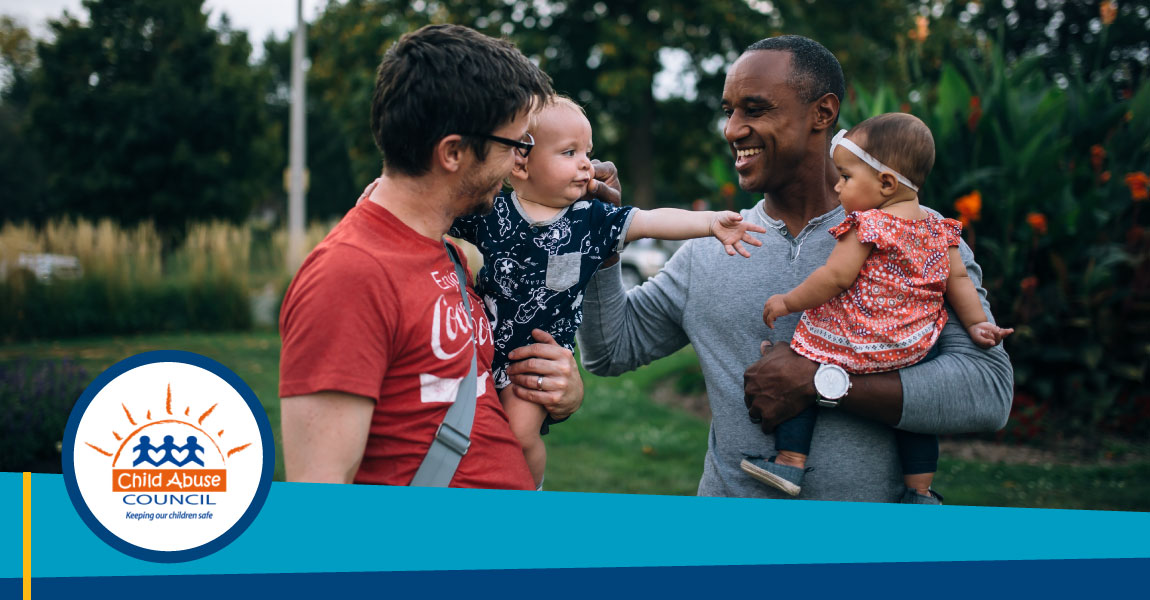The Child Abuse Council’s mission is to lead community efforts to eliminate child abuse and neglect by strengthening children and families through treatment, education, and prevention. Our vision is that all children in our community will be raised in a safe, nurturing family environment.
Featured Guest:
Mark Mathews,
Executive Director
Child Abuse Council
Approach to Collaboration
Our organization strongly believes in always prioritizing the clients, children, and families we serve. We carry this notion with us throughout all our collaborations. We’re currently involved in a partnership called The Open Network, which is composed of the Quad Cities – Davenport, Bettendorf, Iowa, Moline, and Rock Island. We’ve struggled as we deliver services in both states and often have diverse funding sources.
Alongside 40+ other organizations, we identified that our local information and referral system was inferior. In the past, we relied on a 211-call center that administered cold referrals from Omaha, Nebraska. Recently, our group received a large grant from a funder who is working to help us build an information and referral system.
The system will also collect data to identify where specific gaps in service might be, so agencies who are receiving referrals know where they need to follow up. Further, the system will identify potential organizations that can service more clients and will steer them that way. The organizations involved are working together and finding new ways to partner, so the experience has been a very beneficial collaboration.
Application of the 9 Considerations for Collaboration
Build Trust
Our philosophy is that the communities we serve own not-for-profit organizations. To build trust, we have to be transparent and fight for the good of the community. Our motivation is to serve our clients to the best of our abilities and put them first.
Have a Vision
Not-for-profits may struggle with envisioning a long-term plan because funding is often tight, but taking a few minutes to look, plan, and hope for a goal is beneficial for the overall health of an organization. We’re currently involved in a trauma-informed care consortium, which stemmed from the ACEs, or Adverse Childhood Experience Movement several years ago. We’re partnering with two other organizations to look out ten years from now; we’re considering our strategic goals for our region.
We’ve done a good job of building awareness about what “trauma” is, how it affects brain development in children, and we’ve developed a curriculum for our schools. We’re also looking to take this a step further to create trauma-informed workplaces.
Seek to Assure the Success of Your Collaborators
Assuring the success of collaborators requires a selfless attitude. We can claim we want to collaborate, but in the background, we’re still competing for funding, grants, donors, or board members. We stay true to the notion that we all belong to the community. We’re committed to sharing resources, knowledge, and support. The failure of one organization could negatively affect the community we serve, so the way to truly embrace collaboration is to stay strong, so all partners in the community can remain strong as well.
Take Stock
We often share our assets and resources when we have them. For example, we were very fortunate to have a donor provide us with an opportunity to buy a building in downtown Moline at a reduced rate, which allotted us extra office space that we were able to offer to another not-for-profit. It was a win-win situation. They desired to be in downtown Moline, and we received rental income for the space.
We also have a very talented fiscal director we felt could take on more. Some time ago, there was a new immigrant and refugee 501(c)(3) that was waiting for their status and in need of a fiscal agent. We were able to offer that to them for their first year and helped them with reporting for their contracts, grants, paying bills, and held their money in our accounts. Both cases were mutually beneficial – we received rental income on the property, and also received some administration fees from the organization we assisted.
Start Small
As an example of starting small, The Child Abuse Council has two full-time therapists, and we partner with an organization called Family Resources, which specializes in providing support for survivors of domestic violence and sexual assault. They have a shelter on their campus in Davenport; we decided to build our collaboration by starting small and scheduled one of our therapists one day a week at their shelter.
The partnership became very successful. We now have an office on that campus, and our therapist spends more than half her time there. We hope to continue that partnership in the future and hope it grows so we can serve more clients that need our support.
Fail Fast, and Build Rigorous Feedback Loops
Our organization has a “Quality Assurance Committee” that is made up of different staff and board representatives. They meet quarterly and review data from each program to make sure we are hitting our goals and contractual obligations for our funders. A general report is created from this meeting and sent to our Board of Directors for review.
Our Board has also adopted an “Effectiveness Assessment Policy” that makes sure the organization has defined, measurable goals and objectives in place to evaluate the success and impact of our programs in fulfilling these goals and objectives. This policy ensures that from the top down, we put an emphasis on effective programs for our valuable clients.
Take a Portfolio Approach
We like the concept of a portfolio approach for our programs and services. No one client or situation is the same, and we have 13 different programs that tackle the issue of child abuse and neglect in different ways. This approach allows for multiple, research-based programs to be deployed at one time to assist our clients. This approach also provides more stability in the form of a diverse funding stream while aligning our strategy to serve better the children and families we work with.
Consider Non-traditional Partners
One of our most unique partnerships is with “The Forbidden Dragons Motorcycle Club.” One of our goals is to raise awareness about child abuse and the need for prevention. Each year, this group of bikers hosts an awareness ride for us. They stop at different locations along the way to raise money, as well as talk about child abuse and the trauma it causes children. The partnership isn’t a typical collaboration, but is tremendously valuable in helping us fulfill our mission and goal.
Keep Your Donors Apprised of Your Collaborations
We prioritize keeping our funders apprised of our partnerships. We find this concept especially helpful when partnering with family foundations; since they’re very forward-thinking, they often ask us to describe our collaborations in their applications. Several contracts will inquire about our partnerships, so collaborations are becoming more essential, allowing us to serve our clients and the community better.
Future Collaborations
Our dream collaboration would be a stronger partnership with law enforcement. Many police officers meet our clients right in the middle of traumatic events. Amidst this trauma, the police officer is the first person who arrives on the scene. We’d love to build a partnership and receive more referrals from them or conduct more training about trauma experienced by the officers.
This article was composed by Rachel Romana Liu.


